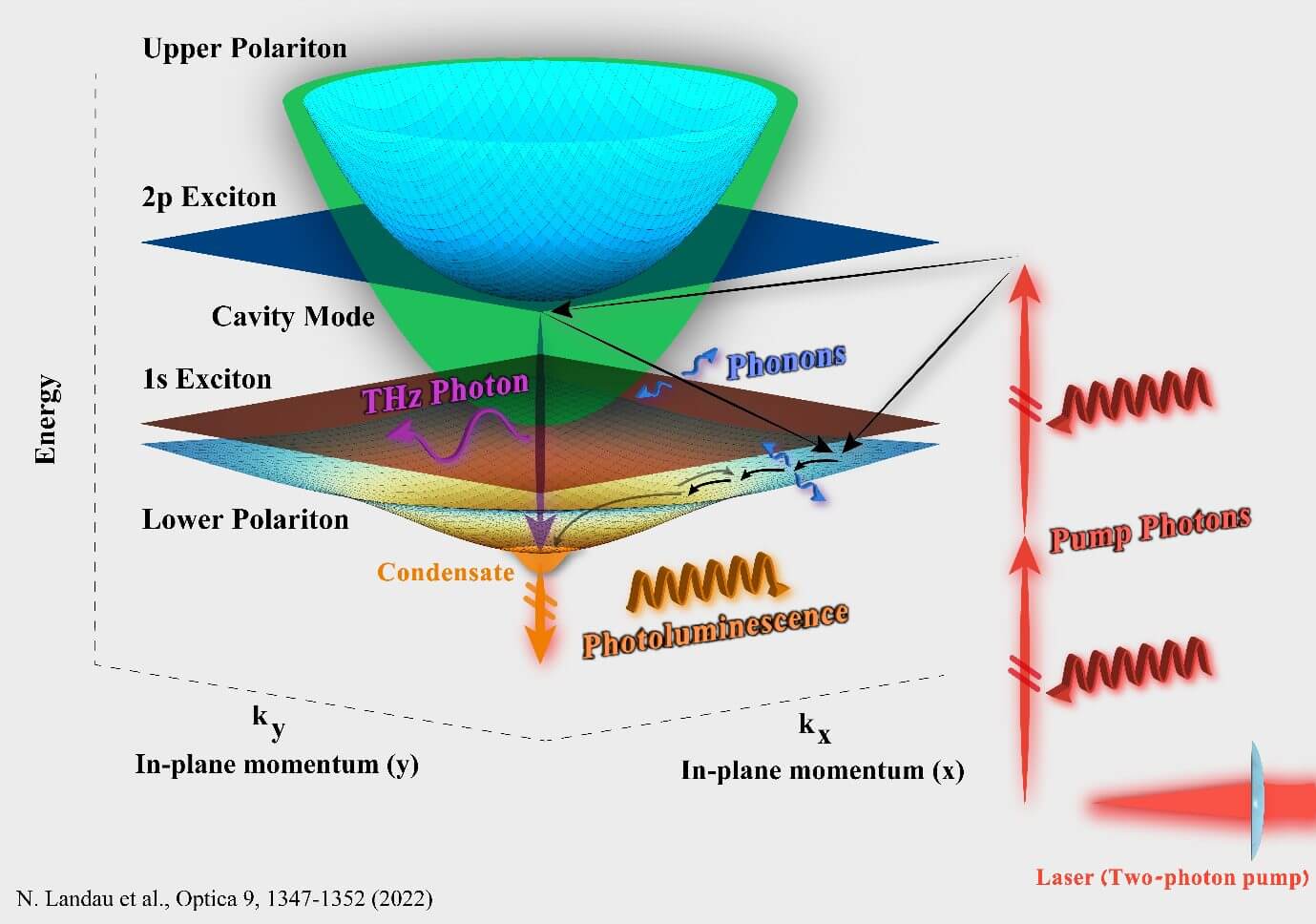The achievement may accelerate research in new quantum technologies and developments in security, biological sensing, wireless communication and more

An experimental achievement by researchers at the Technion in the field of quantum condensation may accelerate research in quantum information processing and in a variety of fields in exact sciences and life sciences. The research published in Optica magazine was led by doctoral student Nadav Landau and Prof. Alex Hait from the Viterbi Faculty of Electrical and Computer Engineering.
Quantum condensation is a physical phenomenon in which a large number of matter particles maintain coherence in time and space - a very important feature for many of the quantum technologies developing today. Optically excited quantum condensation, i.e. by photons, has so far only been achieved through single-photon absorption - a process in which a single photon excites a particle of matter to a state of higher energy, where condensation occurs.
Two-photon absorption, during which two photons are absorbed by a material at the same time, has many scientific and technological advantages, and among other things, it is essential for long-term quantum memory applications. The states of matter that can be reached in such an absorption process are characterized by poor emission of light, and are therefore called "dark states" in this context.
To produce two-photon absorption that will lead to condensation, unique conditions are required that have not been achieved so far due to complex technological and scientific challenges. Among other things, extremely high power lasers and ultra-short pulses in time are required to avoid heating. The Technion researchers overcame the aforementioned challenges and in the article they present quantum condensation in a two-photon absorption process in a semiconductor chip. This achievement paves the way for new quantum technologies that can be practically realized by coupling "dark states" to quantum condensates in a solid state platform.
One of the promising applications of the breakthrough is the realization of particularly efficient laser sources in the terahertz (THz) range of electromagnetic radiation. Such sources are essential for many applications in the field of biological sensing, security, materials science and communication, but finding them is a long-standing challenge associated with fundamental physical constraints. The result reached by the researchers can allow, in principle, the achievement of an increased THz emission by orders of magnitude through a process of double forced emission.
The research was supported by the National Science Foundation
To read the article - click here
